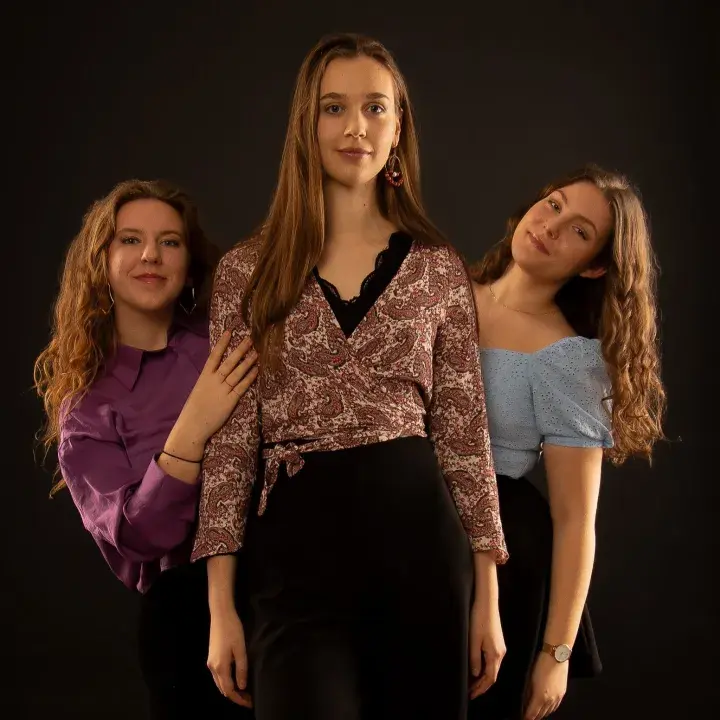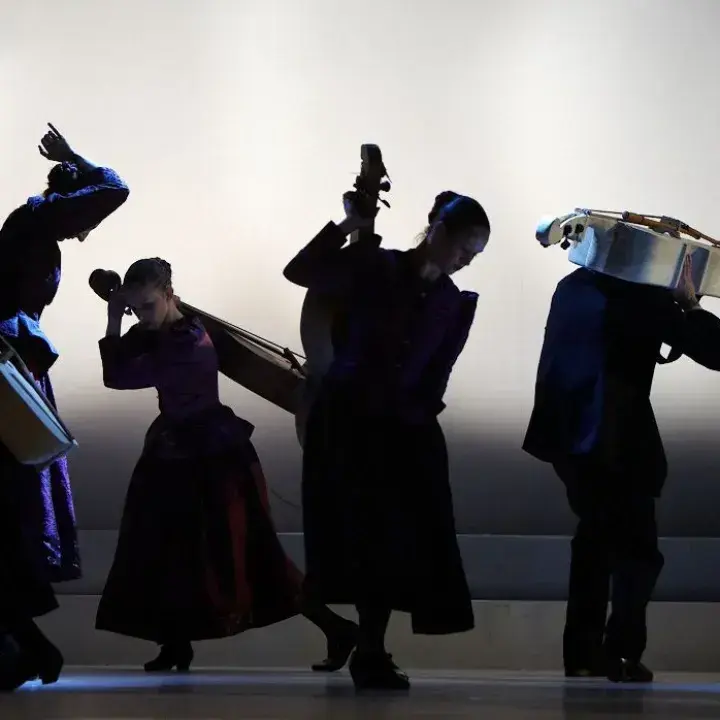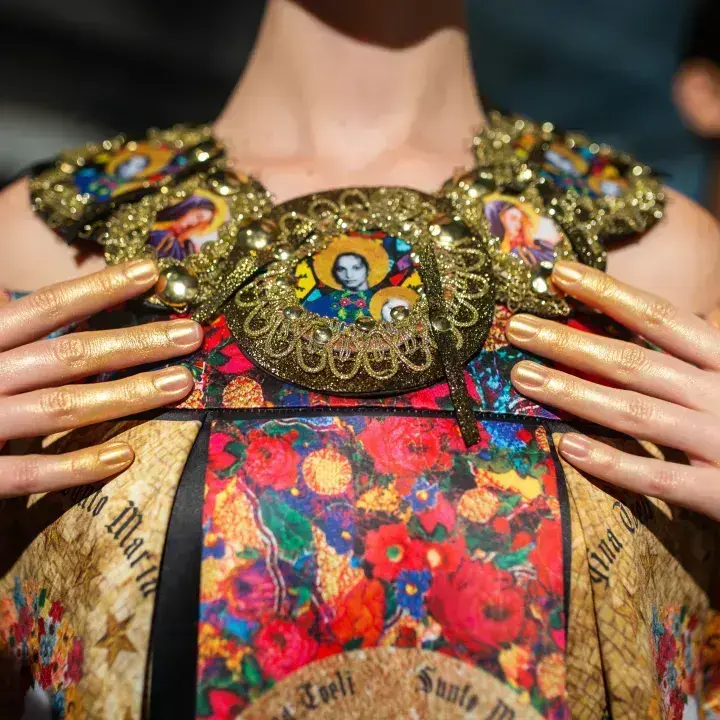The history of the "Vigadó" of Buda
The city of Buda, lying at the foot of the Buda Castle-Hill, had for a long time been culturally and economically more developed and prosperous than Pest, its counterpart on the other side of the Danube. After the end of the 17th century though, when Buda was re-conquered from the Ottoman Turks after 150 years of Turkish invasion, the city's progress took a slower pace. On the present site on the "Vigadó", the Turks built a large storeroom that was converted into an armory and later into a military cart-storage building. In the time of the Compromise (1867) the building was in possession of the "K. und K." Army. The rather simple storage buildings rested on baroque and Mediaeval foundations.
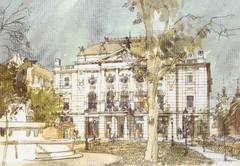
By the end of the 19th century, the borough of Pest had caught up with its rival both culturally and economically. In the middle of the 19th century, the Pest "Redout" (Vigadó), a grand cultural center was built on the Pest bank of the Danube. The Pest "Redout" was suitable for all cultural occasions of the time, including balls, receptions and concerts. As a response to this, the citizens of Buda also wished to erect an equally magnificent building that would host their cultural events. In 1892, Károly Gerlóczy, the deputy mayor of Budapest received a formal request from the Buda citizens for the building of a new and modern cultural center. The realization of this plan however took a longer time, since there seemed to be no suitable site for a future cultural center. The problem was finally solved in 1894, when PM Sándor Wekerle managed to get through a bill that issued any former military buildings into the possession of the Municipal Office of Budapest. This bill gave, among others, the Buda Citadel and the spacious cart-storage building on the corner of Fő utca (high street), Corvin tér (Corvin square) and Iskola utca (School street) to the Municipal Office. The latter site was apparently an ideal spot for future a cultural center. To enlarge the area, the Municipal Office bought the two neighboring plots too.
The City Council of Budapest called for tenders in 1897 for a cultural center. The principal requirement was multifunctionality: the new venue had to be appropriate for hosting a library, several assembly rooms, an auditorium and a restaurant. The winner project was a joint venture of two architects: the young Aladár Árkay and Mór Kallina, Árkay's father-in-law. The construction works begun in the spring of 1898, and next year the building was finished.
The building
The new, two-storey cultural center was designed in the eclectic style characteristic to the age, and had a courtyard and a domelike roof structure. The façade's colonnade is a mixture of ionic and renaissance styles. The gates and windows follow an Italian (Florentine and Roman) design. The main façade was originally decorated by wooden pillars and columns.
The Corvin tér and Fő utca sides of the external walls were richly ornamented, while the Iskola utca one was rather modest. The building looks south in the direction of Corvin tér, and its main block has two flanks attached to it. The semicircular windows of the first floor and circular ones of the second floor used to have richly decorated frames.
Even though the building was completely appropriate for cultural purposes, its decoration was surprisingly simple in contemporary standards. This simplicity was due to economic reasons. The sculptors of the façade statues are not mentioned anywhere in contemporary publications, neither in later historic descriptions. This might entail the fact that the sculptor is not from Hungary, or it might refer to the artistic unimportance of the authors, since possibly no well-known Hungarian sculptors of the age would have missed the opportunity of the name being linked to such a grand enterprise. Some art historians suppose that the statues in question were made by László Kászonyi, one of Kallina's less talented colleagues.
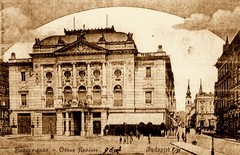
As it can be seen in old photographs, the Fő utca corner of the building hosted a café, and there was a restaurant on the Iskola utca corner. The rather moderate decoration of the exterior was compensated by a lavish interior ornamentation. The there was a marble colonnade in the spacious atrium, and marble stairs led up to the first floor. The stairs were generously lit by lights on either sides, and the walls were light green. The internal Stuccoes of the building were manufactured by the Matscheko and Schroedl Company. The ground floor was occupied by the café, the restaurant and some cloakrooms, while the first floor held a 350 m2 (3767 sq. feet) hall, which was decorated with allegoric paintings by Erik Pauli and Art Nouveau embossments. Having 270 spotlights and 3 large arch-lamps, the hall was especially appropriate for balls. The grand hall opened into two smaller rooms on either side. There was a large restaurant for 400 people in the Iskola utca part of the building, and that part contained the assembly room, reading room and gaming rooms of the Buda Citizens' Circle. The second floor consisted of four privately owned flats, the offices of the Buda Library Association and the Buda Registry Office.
The opening
The new "Vigadó" was opened on 30 January 1900 by mayor János Halmos, on occasion of a carnival ball. The lavish opening ceremony, including a charity ruffle, was attended by both the Buda and Pest aristocracy. The ball-room was later converted into a 306-seat auditorium.
The building was seriously damaged in WW II., and the consequent restoration works did not take into account the former design and layout, yielding a considerably less impressive and less suitable outlook. The building was issued to the Hungarian State Folk Ensemble, though it was only partly capable of meeting the needs of the Ensemble. Nowadays the building serves multifunctional cultural purposes: it hosts the head offices of the Hungarian Heritage House and the Hungarian Institute for Culture and Arts.
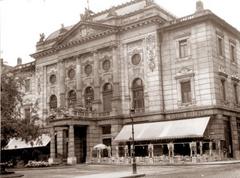
In 1997, the newly building-less company of the National Theater nearly moved into the former "Vigadó". The idea was finally rejected, together with a pane of an underground garage below Corvin tér.
In 2005, the new restoration works begun, this time in accordance with the original design. In addition to repainting the building, the original decoration was reinstalled. The main façade recovered its original, impressive outlook: the formerly absent statues of famous composers and the mythological statue group above the tympanum were placed on their original spots. The formerly walled-up windows were opened again, granting the building its original sense of space. The restoration cost 2.350.000.000 HUF (8 million €), and was chiefly founded by the Hungarian Ministry of Education and Culture.
The restored "Vigadó" changed name and function: it became the seat of the Hungarian Heritage House, in service of Hungarian folk culture.
Sources
Népszabadság; Hajós, György: Évfordulóink a műszaki és természettudományokban

